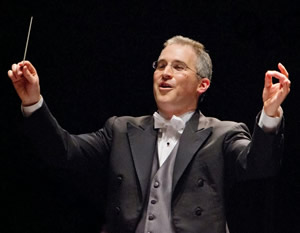 The North Carolina Symphony, like so many arts organizations, is seeking ways to continue to reach its public in this time of pandemic. Rather than the full ensemble, the NCS has now begun a series of chamber music concerts, played in a hall with no audience.
The North Carolina Symphony, like so many arts organizations, is seeking ways to continue to reach its public in this time of pandemic. Rather than the full ensemble, the NCS has now begun a series of chamber music concerts, played in a hall with no audience.
Performing with smaller instrumentation is not new to the orchestra; other concerts have featured chamber-style works, such as Bach’s Brandenburg Concertos. In addition, players from the orchestra have been featured as soloists. As a result, one has experienced the individual musicians in the orchestra as superb performers in their own right.
That was splendidly on display in this concert, in which Schubert’s renowned “Trout” Quintet, D.667, was the single piece on the program. Three of the performers were orchestra members: violinist Jacqueline Saed Wolborsky, who is the orchestra’s principal second violin; Samuel Gold, the principal violist; and Leonid Finkelshteyn, the principal double bass. The other two performers were guests who have appeared with the orchestra before: cellist Zuill Bailey and pianist Natasha Paremski.
The performance carried all the effervescence, lyrical expansiveness, and rhythmic dynamism one could hope for. All of this was plain in the opening section of the first movement. The beginning chord sounded as much like a mini-orchestra as a chamber group, and the tone was consistently rich. The tempo was very lively, about as fast as one could go in this movement. Pianist Paremski had great evenness in her detached articulation, which lent the sound an energetic quality. Meanwhile, all of the strings drew out their melody lines with fine expression.
The repeat makes the movement quite long, but in the hands of these performers, it just added beauties. From the start, close musical contact was spread over the ensemble, with a full sense of dialogue and interchange. Phrases tapered and dovetailed beautifully, among the strings, and between strings and piano. Within the upbeat mood, the minor mode moments were lovely, gentle and introverted. The ensemble made dramatic changes effectively, shifting in an instant to a fully new character. Towards the end of the first section, the violin sets off on a blistering virtuoso passage, played by Wolborsky with both technical brilliance and a sense of delight.
The second movement, andante, featured beautiful long-line and tapered phrasing. There was fine melding of the piano with the other instruments when accompanying in the broken chord figures, a gossamer tone in the descending groups. The soft ending cadence was especially beautiful. Given that the movement is so lyrical, one might miss that it is suffused by a two note long-short rhythm, a focus fully worthy of Beethoven, the master of motive.
The shorter scherzo movement had an always-sharp triplet rhythm. Everything was cleanly articulated and matched among the instruments; the trio had a gentle lyricism.
The particularly famous movement in this piece is its fourth movement theme and variations. This is what lends the quintet its nickname. The origin of the theme is the earlier, equally famous song by Schubert, “Die Forelle” (The Trout). Schubert’s genius as a song composer is fully on display in the short song, as he creates the image of a darting fish in the piano and the finest of lyricism for the singer. (One might note the more somber meaning in the words of the poem itself). In the quintet, Schubert gives each instrument an opportunity to shine playing the beautiful melody.
The theme was wonderfully lyrical in the strings; there was fine interweaving in the first two variations. The third brought back the pianist’s superb articulation, displayed here at a headlong speed which sounded on the verge of getting away from the group. Meantime, Finkelshteyn projected the bass theme from the deep end of the texture in rich counterpoint to the piano. This kinetic excitement led to the drama of the following variation, where the instruments had excellent balance in the thicker writing. Then came the finest of gentle lyrical expression by Bailey, the cellist. The other instruments perfectly supported that very quiet sound. The last variation is the one that is the closest to the song; the piano has the same accompanying figure. Around that, the violin and cello danced musically almost as if they were in a real dance whirling in close embrace. One could imagine the scene at an all-night Schubertiad in Vienna, with dancers carried away by Schubert’s improvisations at the piano. The fade at the end was lovely.
The concluding fifth movement was sheer delight. Again, this listener took pleasure in experiencing the repeat. The piece came to a rollicking dénoument. The whole performance was simply the epitome of what chamber music is meant to be.
The piece was preceded by introductory comments and an interview with the cellist and pianist, the two guest performers. It was pleasant to experience the musicians personally before hearing the music. The ending credits featured a portion of the performance, providing a gentle roundoff to the event.
Perhaps the orchestra might consider continuing these types of concerts even when public performances have resumed. Showcasing its fine individual artists in this way, whether for a public in attendance or online, would no doubt delight audiences around the state and potentially beyond.











